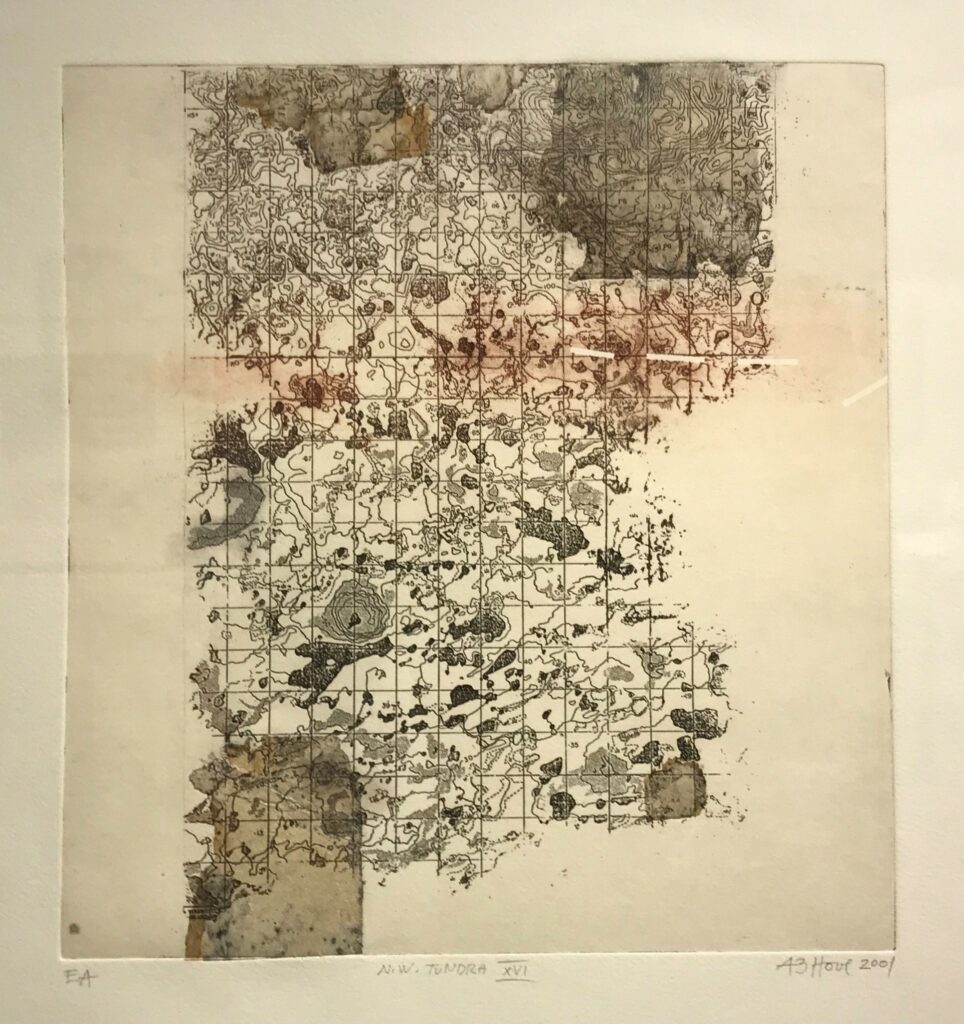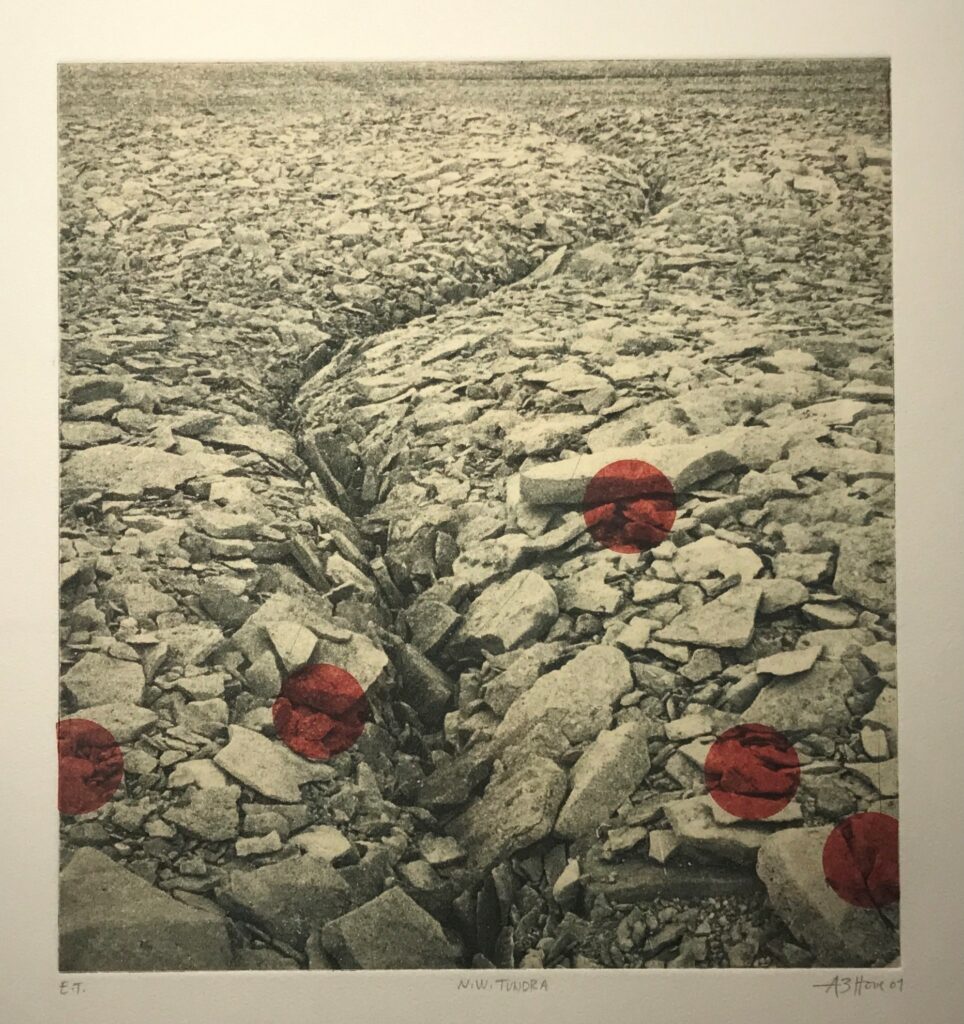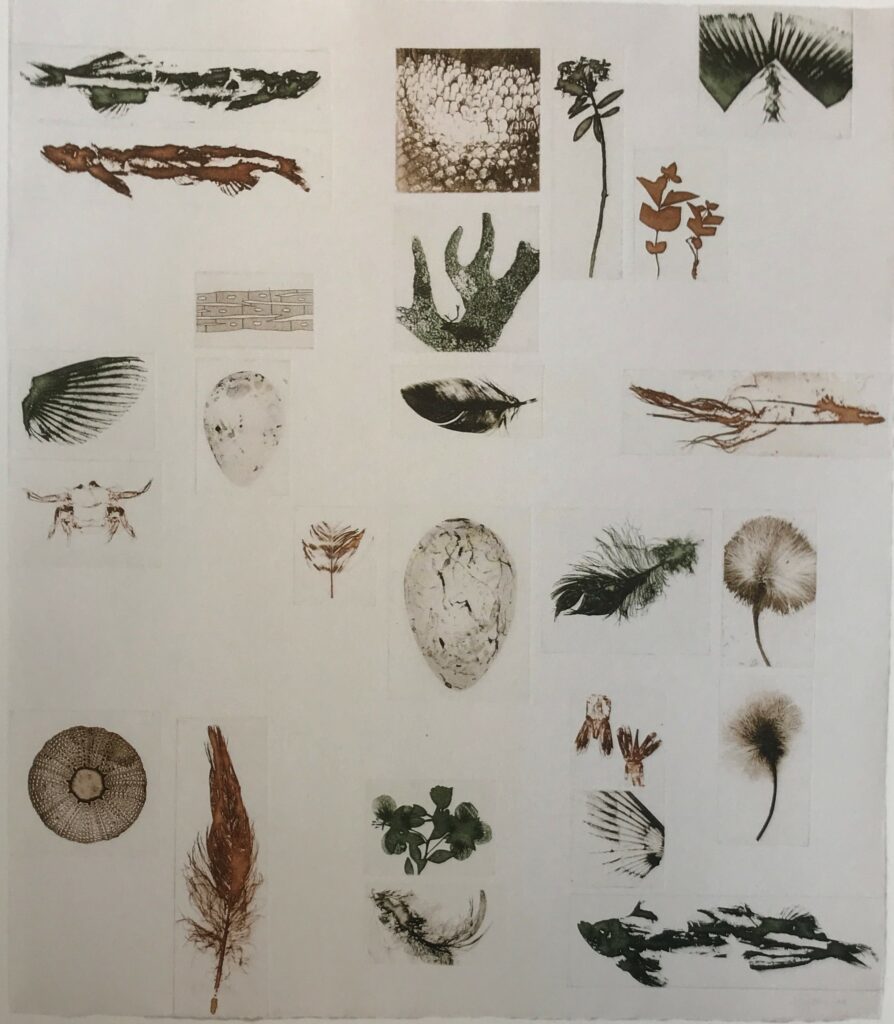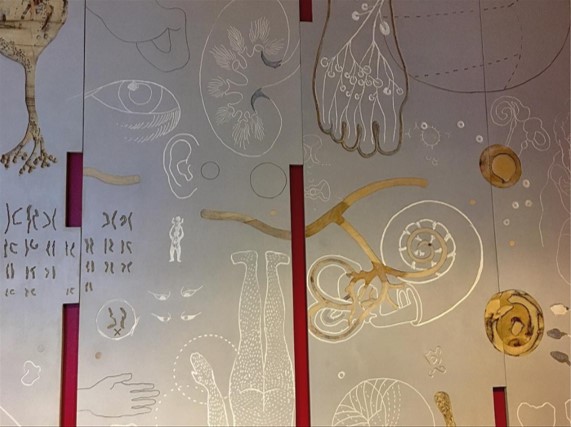N. W. Tundra 99 // Anne-Birthe Hove (1951-2012)
During her lifetime, Anne-Birthe Hove was an eyewitness and artistic interpreter of a period when Greenland went from being a Danish county to Home Rule and later Self-Government. Using ancient graphic traditions, Hove was one of the first to interpret the present, and her artistic testimonies is of great national value.
Hove found much of her inspiration in her travels to South America and India, among other places, but one of her journeys in particular stands out from the rest. In the summer of 1999, Anne-Birthe Hove was invited to join a Swedish scientific expedition to the North American Tundra. The journey took place on an icebreaker carrying 50 international researchers, each with their own scientific specialty. The journey went from Gothenburg via Nuuk to Tuktuyaktuk in the North West Territories between Nunavut in the East and Yukon in the West.


Left: N.W. TUNDRA XVI, 2001.
Right: N.W. TUNDRA, 2001.
Anne-Birthe Hove’s North American Tundra expedition stands in contrast to the many scientific and artistic “Greenland expeditions” throughout history. This time, the expedition includes a female artist in the role of expedition participant, and the expedition is heading out of Greenland.
What Hove sees and senses while travelling, she sketches in her sketchbooks. These sketches, along with her photographs, form the basis for the works that emerge after her return home. Hove’s collection includes a myriad of sketchbooks – some filled to the brim, while in others she only used the first few pages. Looking through Hove’s very personal sketchbooks is an immersive emotional experience. A voyeur looking over Hove’s shoulder in an intimate moment. Hove often bought sketchbooks because she fell in love with the quality of the paper. Some of the sketchbooks are only partially filled because she didn’t want to “ruin” the paper with her sketches. It would be an understatement to say that Hove’s sketches only added to the natural beauty the paper already possessed.
Along with the sketchbooks, photography is one of Hove’s favourite methods of preserving what she sees for later interpretation. On her travels, Hove brought along her trusty cameras, including one with a special film for the special printing method called photogravure. Anne-Birthe Hove’s husband, Thomas Stensgaard, recalls that she had about 40 films developed after returning from the Tundra expedition.
In her photos from the expedition and in the works that later emerged from it, it is clear that the traces of the forces of nature have fascinated her. Hove combines the things she sees with the refined drypoint style that characterises her work. For example, Hove uses the special Arctic phenomenon where the frost causes rocks and shards to gather in rings side by side, forming “Arctic flowers”. She calls them “stone roses” and colours the photogravure with pink watercolour. She is captivated by the small details she observes on the land she treads, resulting in works that show the Tundra in close-up. Along with the stone roses, she reuses the stone cairn – photographed from the top down – as if Hove herself were looking down on them. Other works from her series show the endless horizon of the tundra, which made a big impression on her: “… the fact that there was so much of it – the horizon!”
Hove combines abstraction with the figurative she picks up and saves in her sketchbooks and photographs. Her investigations of nature, science and zoology are evident in the Tundra series, but also in several of her later works. For example, in her works for the opening of the Greenland Institute of Natural Resources in 1999 and in her wall decoration of the Doctors’s Clinic in Nuuk.


Left: Pinngortitaleriffik, Greenland Institute of Natural Resources, 1999.
Right: Decoration of the doctors’s clinic, Nuuk 2010.
With support from the New Carlsberg Foundation, Nuuk Art Museum in 2020, in collaboration with the National Gallery of Denmark, the Greenland National Museum and the Foundation for the Greenland National Gallery, acquired the entire art collection of Anne-Birthe Hove (1951-2012).
The collection includes around 2,000 artworks, mainly on paper, but also includes installations, photographs, tools, sketchbooks, exhibition sketches and much more
As part of the extensive registration of the collection, Nuuk Art Museum will present a selection of Hove’s works through 5 pop-up exhibitions during 2022. The exhibitions will focus on showing Anne-Birthe Hove’s work process, her sketches and thoughts in connection with the creation of her works. In addition to the 5 pop-up exhibitions, the museum will also publish articles about the museum’s work with the collection, Anne-Birthe Hove’s artistic work and her many works that the collection contains, of which this article is also a part.
This article was written by Kristine Bønløkke Spejlborg, 2022.
Sources:
Chemnitz J., et. al. (2016), Anne-Birthe Hove, 1st edition, 1st printing, milik publishing Olsen, A. G. (2005).
Anne-Birthe Hove, Katuaq & milik publishing.
Burkal, I. (2000), Tundra ekspeditionen 1999, Neriusaaq nr. 3/4-99- april 2000.
